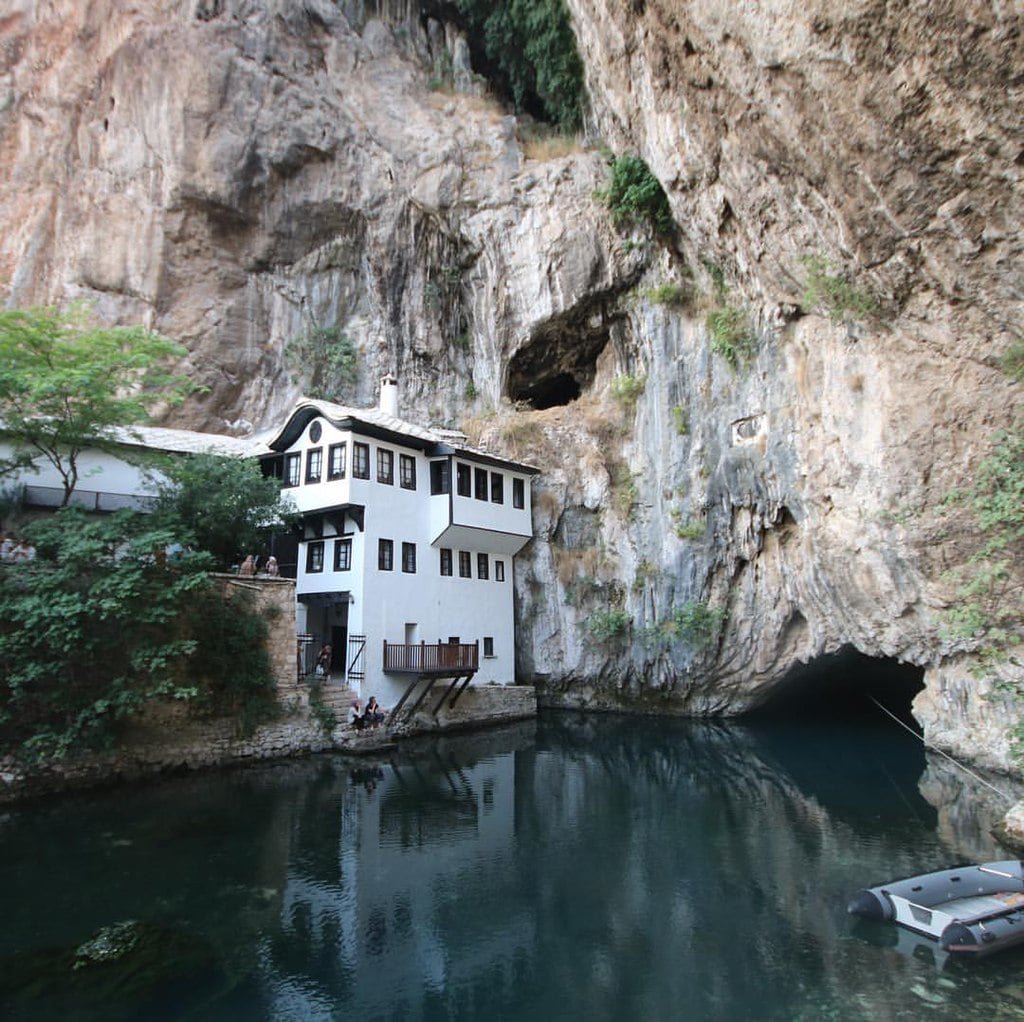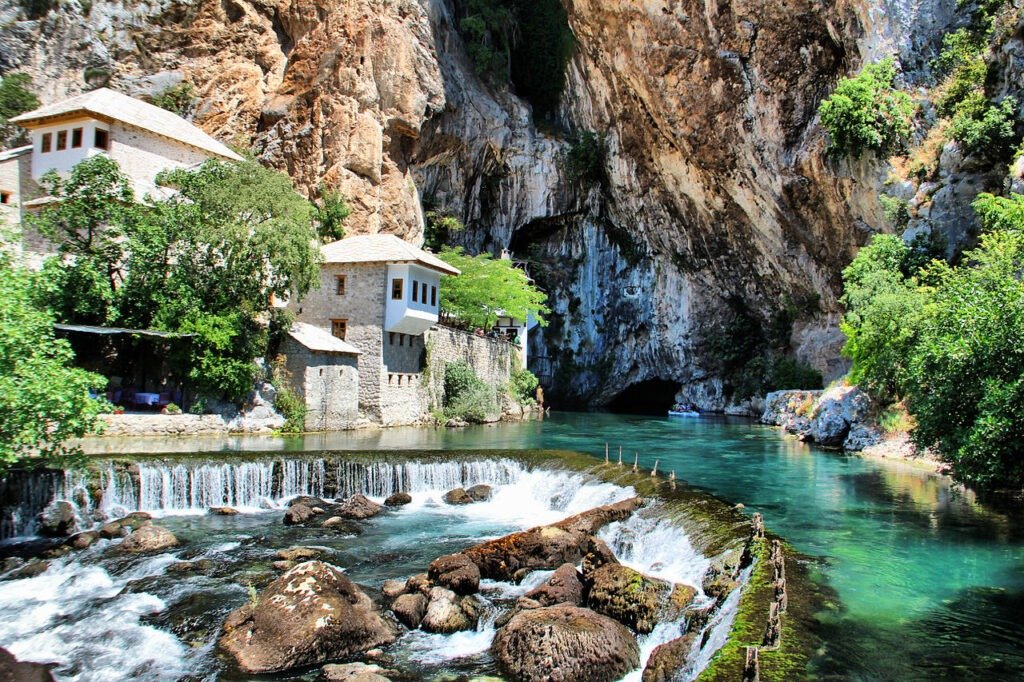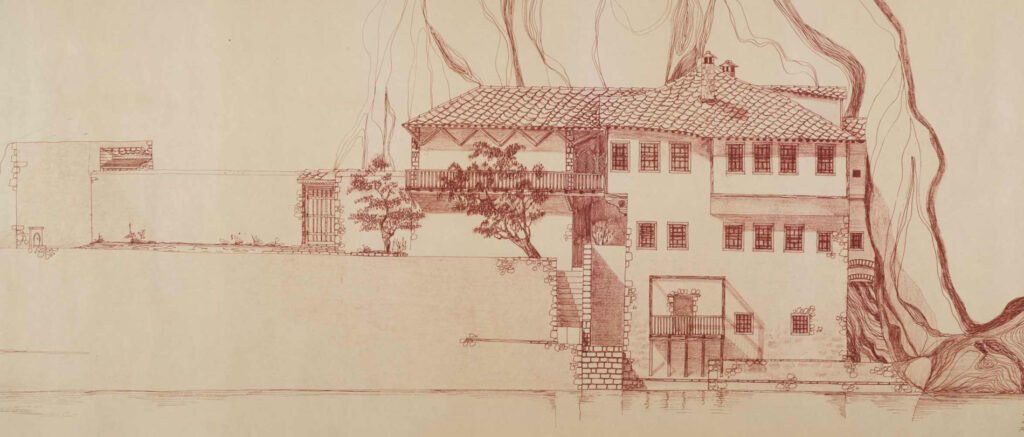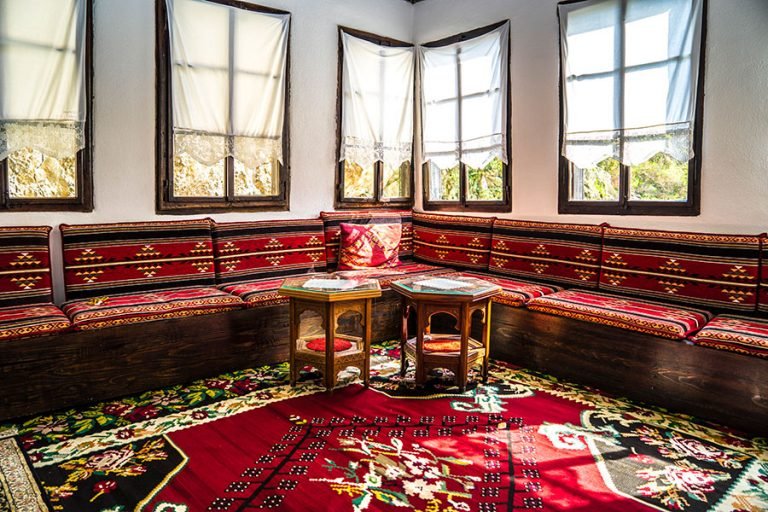A tekke is a place of worship where Dervishes (Sufis) gather, stay, and perform religious ceremonies. Tekke in Blagaj is located at the source of the Buna River, not far from the center of Blagaj, near Mostar.

The landscape around tekke in Blagaj is captivating. Blagaj is a calming village near Mostar, the place ideal for a day trip. Tekka in Blagaj is a national monument of Bosnia and Herzegovina.
What is tekke
Tekke is something like a monastery for dervishes. Dervish is a term that denotes a Muslim mystic, i.e. followers of Sufism, the mystical teachings of Islam. Compared to a monastic lifestyle within Christian monasteries, the dervishes don’t live in tekka but gather there at certain times due to joint prayer, and worship.
The Tekke in Blagaj was an exception to the rule because it belonged to the Bektashi order, which fostered a monastic lifestyle. Dervishes have several orders and they are all different from each other.
Throughout history, tekka in Blagaj also belonged to Halveti, and today it is used by dervishes of the Nakshibendi order (tariqat).
Tekke appeared in Bosnia and Herzegovina with the arrival of Islam in the 15th century, although some were built before the arrival of the Ottomans. The word tekke is of Persian origin and in Bosnia and Herzegovina a derivative of that word – tekija – is used.
Tekijas were built at the entrance to the town or kasaba and were often the first building built. They were built by dervishes, usually sheikhs. They also served as resting places or lodgings for intending travelers.
History of Blagaj Tekke

The Blagaj Tekke complex was built after the establishment of Ottoman rule in Herzegovina, around 1520 at the latest.
Blagaj Tekke is a beautiful representation of Ottoman architecture. It was built right next to the spring of the Buna River and directly underneath a cliff. The water is crystal clear and calming.
The Blagaj tekija was damaged and rebuilt several times due to the rock and stone collapse above the source and the tekija itself. At the request of the sheikh of the tekke, Omer Pasha Latas ordered the first restoration of the tekke, turbet and musarfihana in 1851.
Thirty years after the restoration, the tekke was destroyed when a rock fell on it. After extensive studies in the summer of 1952, the National Institute for the Protection of Cultural Monuments began the restoration of the turbe (mausoleum) and the musafirhana to bring the tekke to its original state as completely as possible and preserve the impression of antiquity.
During the war in Bosnia and Herzegovina, in 1993, the building suffered minor damage, which was repaired after the end of the war. Tekija worked actively until 1925. when her last sheikh Sejdo Šehović died. Since the Second World War, the work of dervishes was officially prohibited in Bosnia and Herzegovina. The collection was managed by the National Museum of Bosnia and Herzegovina until the early 1970s. From then until 1974. it was officially without someone to manage it when the Islamic community took it over again and began to use it and protect it from further deterioration.
The last reconstruction of the Tekke was done in 2013. and a year later, in 2012. the destroyed housing complex – musafirhana (guest house) at its entrance was reconstructed as well.
Tekke appearance

Musafirhana – the part used for guests – has a basement, ground floor, and first floor. 5 stone steps lead down to the river. A single-legged stone staircase leads to the ground floor. On the balcony, you get out of the hayat (pantry) and it is thrown over the river. The Ottoman Baroque influence can be seen in the roof design and decorative elements.
Next to the tekke, there is a turbe in which there are two graves, marked by wooden graves. There is no written information about who is buried here, but according to legend, the long-time sheikh of the Blagaj tekke Acik Pasha (Muhammad Hindija) lies there, who became the sheikh of this tekke in 1848. There is a legend that the second turbe belongs to the famous dervish Sari Saltuk.
In addition to its sacred purpose, the musafirhana is also used today as a catering facility selling souvenirs.

You can go inside the tekke, and you sholud be dressed modestly and be respectful.
If you visit tekke in Blagaj, you will certainly not regret it. You will experience the beauty and peace that this building offers, both inside and out.
Visit our social media profiles as well:
